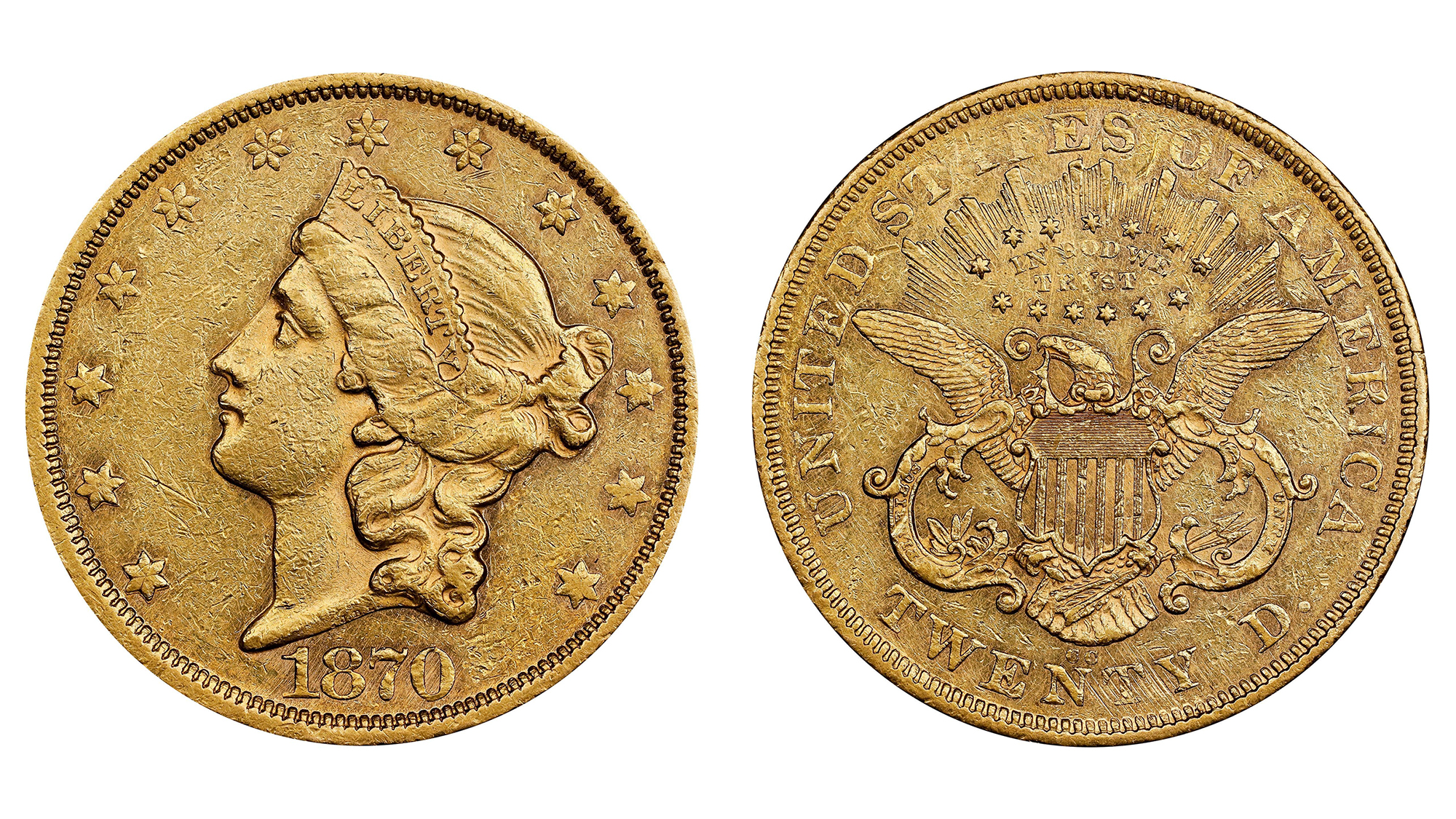
On Tuesday, a rare $20 double eagle gold coin sold for $1.44 million. The coin was one of many items dating back to days of California Gold Rush and prospectors up for bid at The Stack’s Bowers Galleries Rarities Night Auction in Costa Mesa, California.
According to the auction house, this 1870-Carson City (CC) $20 gold piece is one of only 3,789 ever made. Somewhere between 35 and 65 of these pieces survive to this day. While there isn’t a single known example of the 1870-CC $20 in perfect mint condition, this coin is considered the best example. It was last sold at auction in January 1986 to coin collector Bernard Richards for $23,101. It has been certified by the Professional Coin Grading Service (PCGS) for the first time ahead of this auction appearance.
The double eagle gold coin was minted soon after the California Gold Rush. In 1848, gold was found at a sawmill in the foothills of the Sierra Nevada in California. Roughly 300,000 people are estimated to have flocked to the western territory in search of riches. California became a state in 1850 and the Gold Rush was credited with speeding up the statehood process.
Initially, the country’s founders envisioned that there would be no coin larger than a $10 gold coin called an eagle in the United States. However, the massive gold deposits in California inspired Congress to authorize a gold coin that was twice as big as a way to turn the Golden State’s riches into spendable and countable money. The $20 denomination was authorized in 1849 and first struck for circulation in 1850.
[Related: Colonial silver coin found in cabinet sells for $2.5 million.]
This double eagle $20 gold piece weighs nearly an ounce. Eventually, double eagles became the largest coin for circulation. Mints in Philadelphia, New Orleans, and San Francisco churned out thousands of them every year, with some years seeing over a million coins struck. By 1869, Congress authorized a new branch mint at Carson City, Nevada, just to handle the huge quantities of silver coming in from the Comstock Lode silver deposit.
Enough gold was also discovered in deposits in Nevada, Montana, and Utah for local production of gold coins like the double eagle. When the Carson City Mint opened, only 3,789 double eagles were struck. Each of them had a small CC mark on the reverse side to represent where they were minted.

